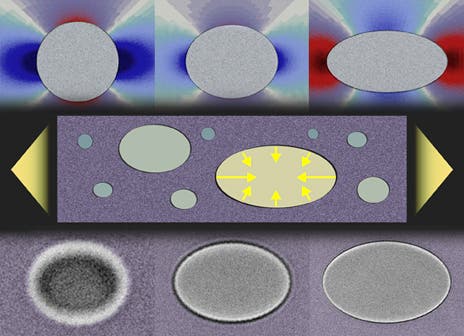Some findings are just counterintuitive. I mean, you’d think that adding water to materials would always make them softer, right ? Well according to Yale researchers, that’s not necessarily the case. The team found that you could improve the strength of a composite by 30 percent by embedding droplets of water into its structure.

Adding pockets of water to solids can actually make them stronger, offering new perspective in engineering, especially in plastic engineering (the technique doesn’t work with metals, ceramics or other structural materials). Engineers will also be able to add other properties (such as electromagnetism) to materials by embedding droplets of liquid. By understanding the interaction between water and other materials, researchers can also develop other, more advanced materials in the future.
“This is a great example of how different types of physics emerge at different scales,” Dr. Eric Dufresne, associate professor of mechanical engineering and materials science at Yale and principle investigator of the study, told The Speaker. “Shrinking the scale of an object can really change how it behaves.”
“Surface tension is a force that tries to reduce the surface area of a material,” Dufresne said. “It is familiar in fluids–it’s the force that pulls water into a sponge, makes wet hair clump together and lets insects walk on water. Solids have surface tension too, but usually the ‘elastic force’ of the solid is so strong that surface tension doesn’t have much of an effect. The ‘elastic force’ of a solid is what makes a solid spring back to its original shape after you stop pushing on it.”
“As the solid gets stiffer, the liquid droplets need to be smaller in order to have this stiffening or cloaking effect. By embedding the solid with droplets of different materials, one can give it new electrical, optical or mechanical properties. On the simple scale, they could lower the cost be replacing expensive polymers with simple liquids. More excitingly, embedded droplets could provide an electromagnetic handle to actuate structures.”
Journal Reference: Robert W. Style, Rostislav Boltyanskiy, Benjamin Allen, Katharine E. Jensen, Henry P. Foote, John S. Wettlaufer, and Eric R. Dufresne. Stiffening solids with liquid inclusions.






